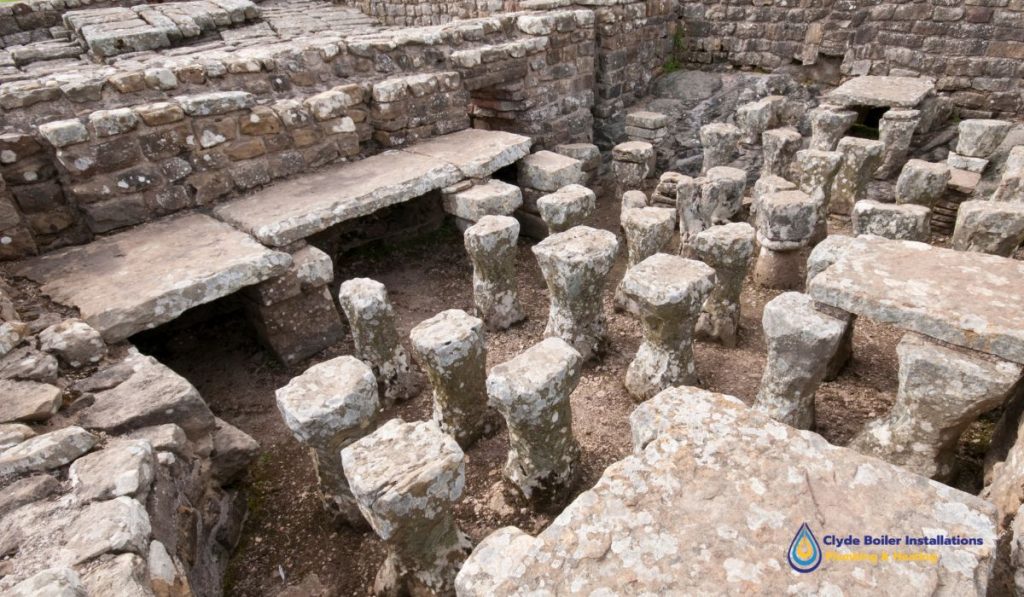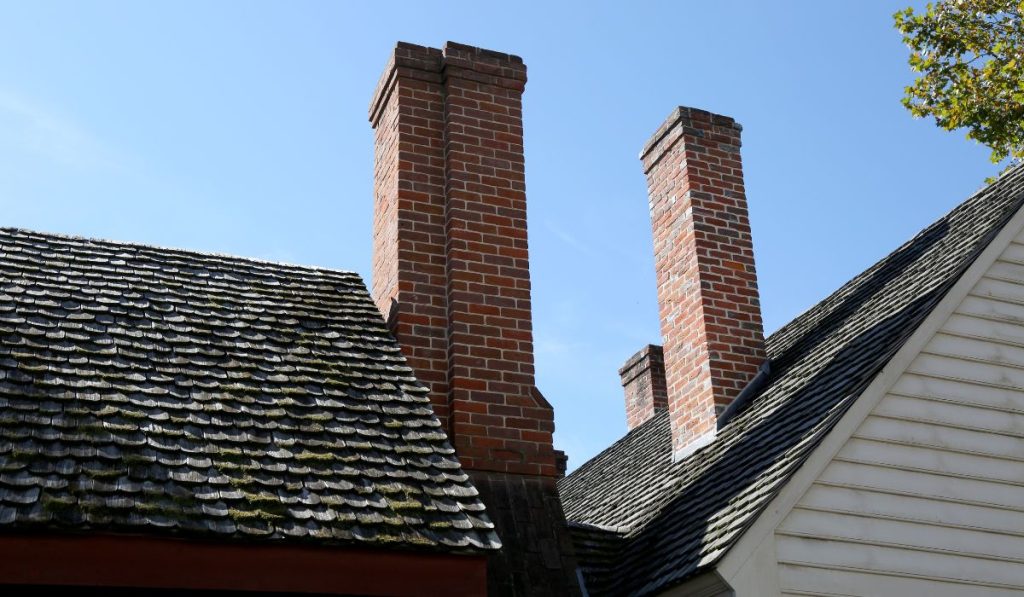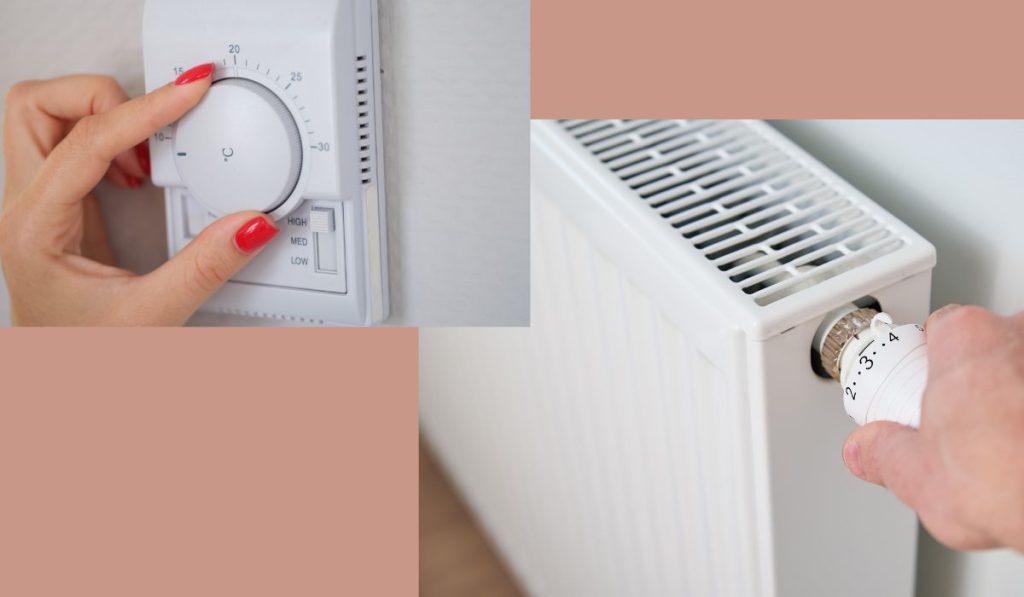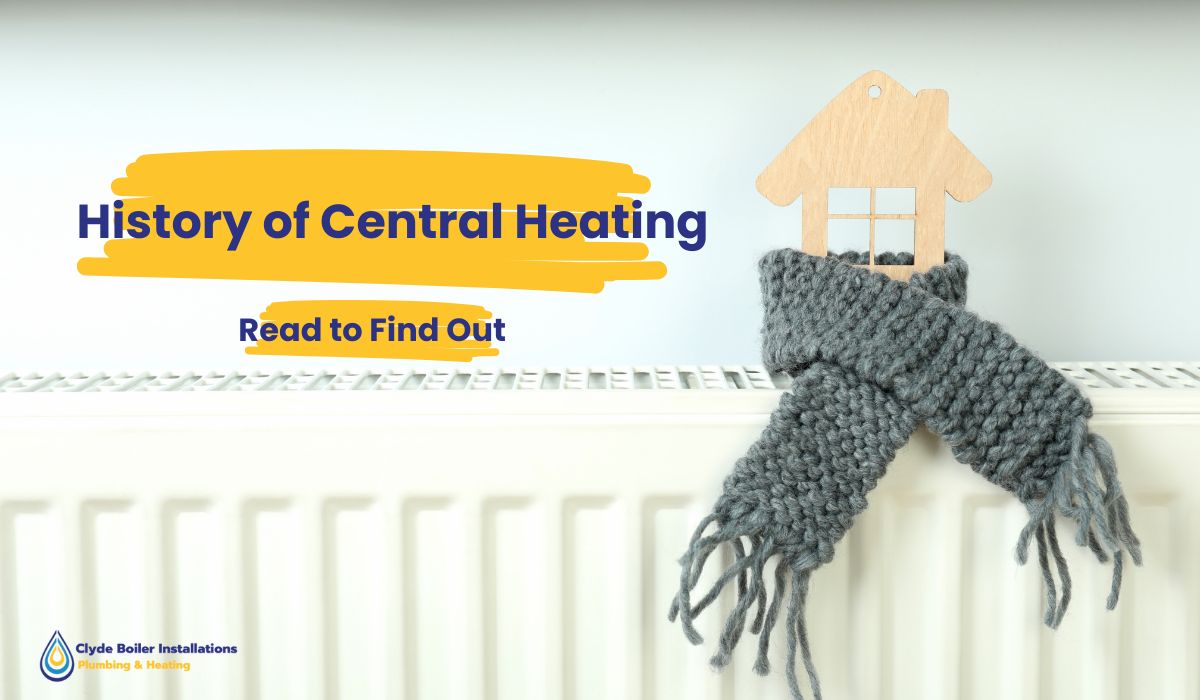In the middle of winter, your boiler just gave out, and suddenly you realise it is the episode of Game of Thrones: ‘Winter is Coming’ — fast. At that very moment, the boiler repair becomes more indispensable than any other house chore. You are on a rescue mission.
But did you know that the boilers that have become the guardians of warmth have had a long journey to become what they are now?
Think of them as the Tony Stark of heating, always striving to stay ahead of the games just by upgrading.
Central heating was only sometimes this convenient, as now you only have to move the thermostat to 20 degrees to enjoy wearing summer clothes in your home while there is a blizzard outside.
With centuries of evolution, starting from campfires to hypocausts and reaching central heating systems, heating your homes was always at the top of everyone’s mind.
In this article, we will go along with you to learn about the long history of central heating and all the evolutions it came across to where you are now — standing frustrated for just a boiler repair.
Ancient Origins Fixed Central Hearth
Initiating the campfire and bringing it into the house was a stepping stone towards heating homes. The original problem was managing the smoke and channelling it to an outlet, which was impossible before due to limited resources, yet it was necessary.
Such thought gave birth to the concept of fixed stoves or hearths in certain parts of homes to provide the necessary heating. But smoke could not be properly vented through pipes or walls.
Problems with Ancient Heating
Our ancestors were concerned about the smoke hitting their lungs but were also aware and creative enough to invent new ways. However, it was the start of everything, so they had to live with what was possible then.
From the beginning of history, fixed hearths have been humanity’s first defence against freezing winters, enabling the early stages of home heating innovations.
It dates back millennia, and here we are after all those developments dealing with the finest heating infrastructure our forefathers may have imagined.
The road to central heating was full of inventions, and the most important and remarkable one lay in the hands of the Romans. The most dramatic invention of all time in the history of heating is the famous ‘hypocausts.’
Hypocausts

The first central heating and underfloor heating systems – the so-called hypocausts—date back to the Roman Empire. Even then, a network of special channels placed under the floor and in the walls carried hot flue gases from the furnace. Roman engineers pioneered the use of one specialised room and network of ducts rather than building a furnace for each individual room.
But some researchers of antiquity, referring to the works of Herodotus, Pliny and Seneca, claim that Roman thermae were heated in another way – with hot water flowing through copper pipes, i.e. the prototype of the water heating system.
Romans weren’t just builders of empires but pioneers of the earliest heating system hypocausts. Though this system was the founding stone of what we see as the central heating system, it was a bit complicated and labour-intensive process to keep it away from damage.
As the Roman Empire crumbled, the hypocaust, which we can believe to be the primitive shape of central heating, was lost.
After that, Western Europe didn’t see any advancement in heating systems for quite a long time.
Function Of Boiler In Hypocaust
The hypocaust used the traditional furnace that burned fuel, mostly wood. It won’t be wrong to say that the actual base of central heating, which we admire as modern controlled central heating, is the result of the old Roman hypocausts; the concept was introduced and put together then while the finest shape arrived—now.
Medieval Heating System

With no new inventions and the fall of the Roman Empire, people in medieval times again moved back to the earlier version of using wood or coal to warm their homes, and this concept arose as the indoor furnaces.
The Middle Ages brought humanity back to basics with burning wood and coal, but things changed a bit with the introduction of chimneys. It was a remarkable turning point that led to what was then supposed to be the modern heating era.
Castles or homes built during those times were modernised by adding a small flue to the outside of an indoor fireplace. The chimneys were kept wide, so there was enough space to clean the inside.
I wonder what you would choose.
Rather than spending your weekends sweeping chimney soot or calling for a quick boiler repair? Luckily, we have gone a long way.
Thank the inventors for providing such infrastructure where you do not need to wipe down all the smoke from the chimney and become unrecognisable.
Let’s move on to a little problem with the indoor furnace built with stones; the heat caused the stones to crack up too soon.
The cast iron shield came around the stones so they may get saved.
With each effort, the heating system was surely on its way to getting better and more efficient.
Absence Of Boilers In Central Heating During the Medieval Period
During this time, the concept of a common fireplace originated from ancient times or the Stone Age, with the only difference being that the fire was brought inside the home. There were proper, well-made chimneys to flush out the smoke.
More boilers were needed for heating. Still, we can see the traces of experiments on heating coal or wood in a furnace to heat air. This surely relates to modern boilers.
Since boilers were not widely used among the masses during the medieval period, they were too expensive and did not have easy maintenance either. People dreaded boiler repair because the costs were relatively much higher in those times.
Problem With The Medievial Heating Systems
- The inventions that led to central heating were made due to the notable problems in fireplaces, which were subject to many issues.
- These medieval heating methods were less efficient when heating the houses; much heat and warmth went off through the chimney.
- The second hazard that led to the invention of newer heating methods was the danger of open fire, which also caused the ‘Great Fire of London’.
- Health and safety became important, and the medieval heating system lost its charm. Long-term exposure to the smoke from the chimney constantly threatened bad lung health.
- Another factor that contributed to the elimination of central fireplaces was the inability to control how much heat was needed.
Due to these and other minor issues, history has seen a tremendous industrial revolution in heating systems.
Industrial Revolution and The Central Heating
The Entry Of Coal
With fire burning since time immemorial, coal came as the aspiring hero of
the central heating system.
In 1600, a French man used coal to warm up the air, and he used internal pipes to circulate the warm air through different pipe openings.
How similar is this idea to what we have in the form of central heating?
The only thing lacking in this French man’s invention and the new heating was the ability to control how much heat was required and when it was required.
Steam Heating
As coal enjoyed its reign over the heating industry, it was noticed for its use in heating water and turning it into steam, leading to steam heating. The energy from coal was used to heat water and change it to steam, leading to steam engines, which even work in some parts of the world as steam turbines.
The idea behind this was to burn coal and use its energy to either change the water to steam or to make the air hot for heating.
In 1700, a new invention based on the old Roman hypocausts was invented. It used coal to heat air in the chamber, which led it to heat Pensselvenia Hospital Phillapedia.
The Discovery Of Gas
After the revolutionary coal, gas was found as a natural reservoir in the early 19th century. Still, in most parts of the world, house heating uses gas to make fire and heat the air.
Since it was widely available and without precautionary measures, gas started to be used in many industries, including heating homes, running stoves, and as a fuel. It is still widely used around the globe.
Although gas is relatively cheaper and available, a few factors affect its effectiveness. The one important factor is the life-threatening danger of an explosion.
The second is the inefficient control overheating, which is mostly manual. As things are getting automated and we need to save time and energy, the processes become less mundane and repetitive, and these approaches to central heating are thought to be getting a boom.
These two points opened the way for central heating, which later proved to be a convenient and stress-free approach in the history of central heating.
The Industrial Revolution and the Rise Of Boilers
With the entry of coal as a fuel to change water to steam, boilers were used almost everywhere. People were getting rid of wood heating for many reasons, so the Industrial Revolution brought much-needed finances to support the bigger ideas and inventions.
At that time, human history saw a tremendous rise in the use of boilers for central heating.
As techniques and materials improved daily, complications in technology also started arising. Highly expert technicians were in high demand because, due to the complexities involved, no layman could do a boiler repair.
Modern Central Heating

A modernised form of central heating developed to its finest shape, which we now experience in our homes. The system is effective, uses only that much energy that is needed without waste, and the controls are brilliant.
In modern central heating, the materials used in the making and the ducts used are of premium quality, which only requires a little maintenance.
But like any modern marvel, it requires TLC now and then, especially if it needs a boiler repair.
Use Of Boilers In Modern Central Heating
Cast iron was primarily used for central heating during the Industrial Revolution, but it was heavy and not energy efficient. Now, condensing boilers are used in modern central heating, which even reuse waste heat. They are good for easing energy consumption.
Maintenance and Importance Of Boiler Repair
While boilers are the central hub of any heating system, it is often found that if central heating malfunctions, there is an 80% chance of a fault in the boiler’s processing.
To keep things on track, you must pay attention to a regular inspection of overall central heating. Always check the ducts and remove any possible blockages so the boiler’s health is not threatened. If a boiler repair is needed, always trust a verified technician.
Conclusion
Central heating has a long history, from primitive to as long as the Stone Age, but in each era, the human mind has started to evolve things for the better. From campfires and wood hearths to indoor fireplaces, which led to the Industrial Revolution in using coal and gas to heat rooms—there is plenty to tell. Finally, central heating has now led us to the modern era of heating our homes with controlled and effective central heating systems.



